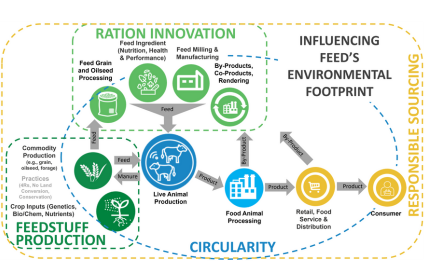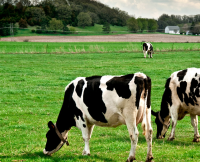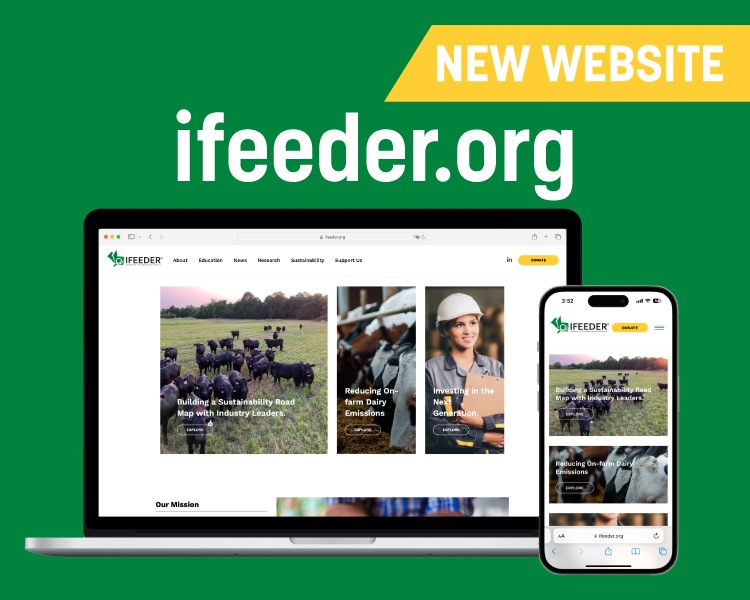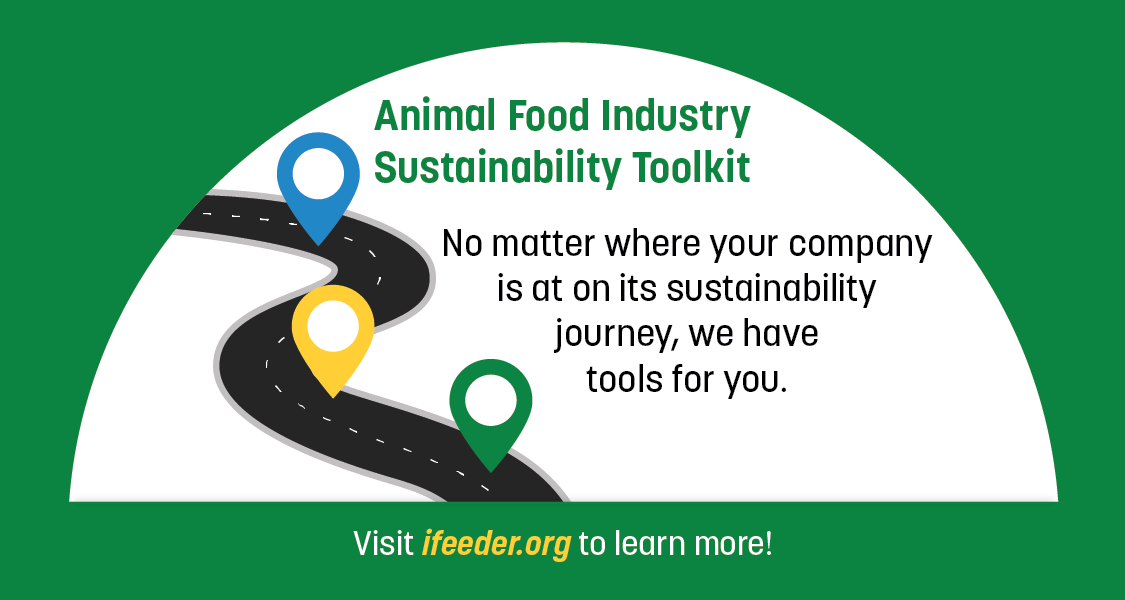IFEEDER Newsletter: Volume 8, Issue 11
December 12, 2023
Ensuring Feed Is at the Table

Each fall, the Sustainable Agriculture Summit brings together various members of the agriculture value chain to learn from experts, share challenges and successes, and strengthen partnerships. Last week, over 900 attendees gathered for the event. As a key solution opportunity for reducing the footprint of animal agriculture, it’s paramount that feed is part of the conversation.
The Institute for Feed Education and Research (IFEEDER) is ensuring feed is at the table, not only to join the discussion, but to lead it. During the main stage session last week, I had the opportunity to moderate a panel discussion titled, “Collaborating to Mitigate the Environmental Impact of Feed,” with panelists Glenda Gehl of Forage Genetics International, Jennifer Schmitt of the Institute on the Environment at the University of Minnesota, Emily Stackhouse of Alltech, Inc., and Sam Wildman of the World Wildlife Fund.

The discussion offered insights into opportunities where feed can influence an animal’s environmental footprint. Panelists focused their responses to the audience questions on four themes: feedstuff production, ration innovation, circularity and responsible sourcing.
If feed is to be recognized as part of the solution, we have to be at the table to partner with our customers and stakeholders.
IFEEDER’s research and education efforts are aimed at bringing the animal food industry and our stakeholders together to build collaboration and develop resources to achieve the solutions our customers and their customers are seeking. Are you a part of the conversation?
If you’d like to join IFEEDER’s efforts to reduce animal’s environmental footprint, contact me today.
Are You a Dairy Nutritionist? We Need Your Help!
 Innovative feed management strategies, including feed additives and ingredients, have the potential to reduce the enteric methane emissions of U.S. dairy herds. As part of a project led by The Nature Conservancy, IFEEDER, Dairy Management, Inc. and in collaboration with Decision Innovation Solutions, we’re surveying dairy nutritionists to understand attitudes toward feed management interventions. In less than 5 minutes, your participation will provide valuable insights for the project.
Innovative feed management strategies, including feed additives and ingredients, have the potential to reduce the enteric methane emissions of U.S. dairy herds. As part of a project led by The Nature Conservancy, IFEEDER, Dairy Management, Inc. and in collaboration with Decision Innovation Solutions, we’re surveying dairy nutritionists to understand attitudes toward feed management interventions. In less than 5 minutes, your participation will provide valuable insights for the project.

The IFEEDER Website: A New Look for Better Access
Check out our new look at IFEEDER.org. As part of our strategy to raise the awareness of IFEEDER and engage more partners across the animal feed and pet food value chain, we launched a new website this week. Take a look and let us know what you think.
New Video from the CLEAR Center
Last month, the CLEAR Center at the University of California-Davis released a video delving into the impact your burger has on the environment. While there is an impact, the video explains how meat is not the climate killer it is made out to be. Animal agriculture is responsible for 4% of all U.S. greenhouse gas emissions, and beef cattle account for 2.2% of that. When we reduce methane, we reduce warming, and can even offset carbon emissions from other sectors like fossil fuels, which currently account for 80% of all direct greenhouse gas emissions in the U.S. Take a look, and better yet, take a minute to share the video on your social media accounts.
What Am I Reading?

In May, the CLEAR Center and the California Department of Food and Agriculture hosted the, “State of the Science Summit: Feed Strategies to Reduce Enteric Emissions.” Last month, the organizations released a joint report highlighting takeaways from the event. Here are a few highlights:
- Feed additives offer a lot of potential to reduce enteric emissions when used in ruminant nutrition, but we don’t have all the answers, programs or policies in place yet.
- Research and resulting data to support human and animal safety, efficacy, tradeoffs and benefits are paramount.
- Because most feed additive research has been sponsored by private companies, there is a lack of research into the potential pros and cons of combining multiple feed additives.
- An established, standardized evaluation protocol (as well as protocols to evaluate methane reduction claims in the field) will contribute to more accurate and reliable assessments.
- Once regulatory policies are in place and conservation programs are available to support producer implementation, animal nutritionists will need to understand what and how to utilize these products with their producers.

Find IFEEDER at these upcoming events:
|
Donate Now!For every $1 IFEEDER invests in research and education projects, $5 is leveraged from other sources. All donations go directly toward projects, as IFEEDER's administrative costs are borne by American Feed Industry Association, so your donations go even further. Help us maximize our reach by donating today! Click the link below to make a gift. For questions, contact Lara Moody. |
The copyright law of the United States (Title 17, United States Code) governs the making of photocopies or other reproductions of copyrighted material. If you would like to photocopy, otherwise reproduce, or publish any of the foregoing material, please contact AFIA’s Sarah Novak or Victoria Broehm at (703) 524-0810 for permission.